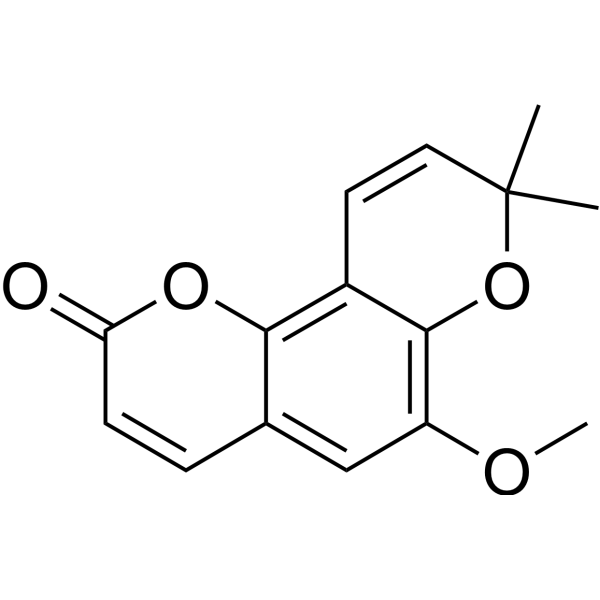
Braylin
CAS No. 6054-10-0
Braylin( —— )
Catalog No. M31013 CAS No. 6054-10-0
Braylin has anti-inflammatory, antinociceptive and immunomodulatory effects, which possibly act through the glucocorticoid receptor activation and by inhibition of the transcriptional activity of NF-κB.
Purity : >98% (HPLC)
 COA
COA
 Datasheet
Datasheet
 HNMR
HNMR
 HPLC
HPLC
 MSDS
MSDS
 Handing Instructions
Handing Instructions
| Size | Price / USD | Stock | Quantity |
| 5MG | 414 | In Stock |


|
| 50MG | Get Quote | In Stock |


|
| 100MG | Get Quote | In Stock |


|
Biological Information
-
Product NameBraylin
-
NoteResearch use only, not for human use.
-
Brief DescriptionBraylin has anti-inflammatory, antinociceptive and immunomodulatory effects, which possibly act through the glucocorticoid receptor activation and by inhibition of the transcriptional activity of NF-κB.
-
DescriptionBraylin has anti-inflammatory, antinociceptive and immunomodulatory effects, which possibly act through the glucocorticoid receptor activation and by inhibition of the transcriptional activity of NF-κB. Braylin is also a phosphodiesterase-4 inhibitor, it could represent an ideal prototype of glucocorticoid receptor ligand, able to induce synergic immunomodulatory effects.
-
In Vitro——
-
In Vivo——
-
Synonyms——
-
PathwayOthers
-
TargetOther Targets
-
Recptor——
-
Research Area——
-
Indication——
Chemical Information
-
CAS Number6054-10-0
-
Formula Weight258.3
-
Molecular FormulaC15H14O4
-
Purity>98% (HPLC)
-
Solubility——
-
SMILES——
-
Chemical Name——
Shipping & Storage Information
-
Storage(-20℃)
-
ShippingWith Ice Pack
-
Stability≥ 2 years
Reference
molnova catalog



related products
-
Ginsenoside F4
Ginsenoside F4 has inhibitory effect on human lymphocytoma JK cell by inducing its apoptosis, the mechanism is related to the mitochondrial dysfunction and the increase of Bax expression and decrease of Bcl-2 expression.
-
2,4,6-Triiodophenol
2,4,6-Triiodophenol is used as an iodinated disinfection by product formed during chlorination of sewage effluents.
-
Decoquinate
Decoquinate is a coccidiostat used in veterinary medicine.



 Cart
Cart
 sales@molnova.com
sales@molnova.com


